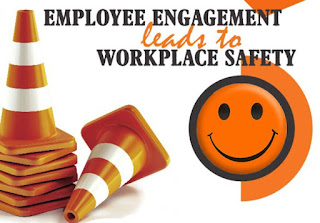Traditional
safety award programs were originally designed to decrease accidents and almost
all of them rewarded employees based on the number of accidents reduced. Unfortunately poor design, using team goals
and lax supervisory attention lead to non-reporting of incidents by employees in
order to get their awards.
Today
safety award programs are used to reduce the leading indicators of accidents
and reinforcing other major components like training and education. In any award program, a key first step is to
challenge employees to participate in these programs, and here incentives play
an important role.
Other Ways Incentives
Can Work For Your Safety Program
Safety Incentives Change Behavior
Behavior
Based Safety probably gets as much negative press from safety professionals as
not. For many reasons it’s just not well
liked. But like so many business
strategies, it’s not always the strategy that’s at fault, but the
implementation. In its simplest form,
BBS is the monitoring of safety behavior by management and peers and the
reinforcement of those behaviors when they are positive. When you use minimal awards reinforcing the
behavior, you can turn it into a habit. Regrettably too many companies used
these programs negatively, which does nothing to improve performance
Safety Incentives Promote Healthy Work
Culture
Incentives
can be used to motivate your workforce to enroll in wellness programs and then
actively participate in them to achieve their individual results. They have
proven very effective for this objective especially in gaining introductory
interest.
Safety Incentives Engage Employees to Drive
Overall Results
Safety
programs are connected to your overall business goals because when your
workplace is safe, there are reduced work-related injuries, burnout, and employee
turn-over rates. Through communications, the right awards, surveys and other feedback mechanisms
you can ensure that your safety program has high participation and engagement.
Safety
programs not only build a good safety record, but also help build your company
culture and connect employees to the core values of your business. A successful
program can also ensure a return on the investment, proving that when employees
look out for each other, they also look out for the health and wellbeing of
your business. Allow you employees to
participate in profits with year-end recognition events that will further
strengthen your safety culture.


